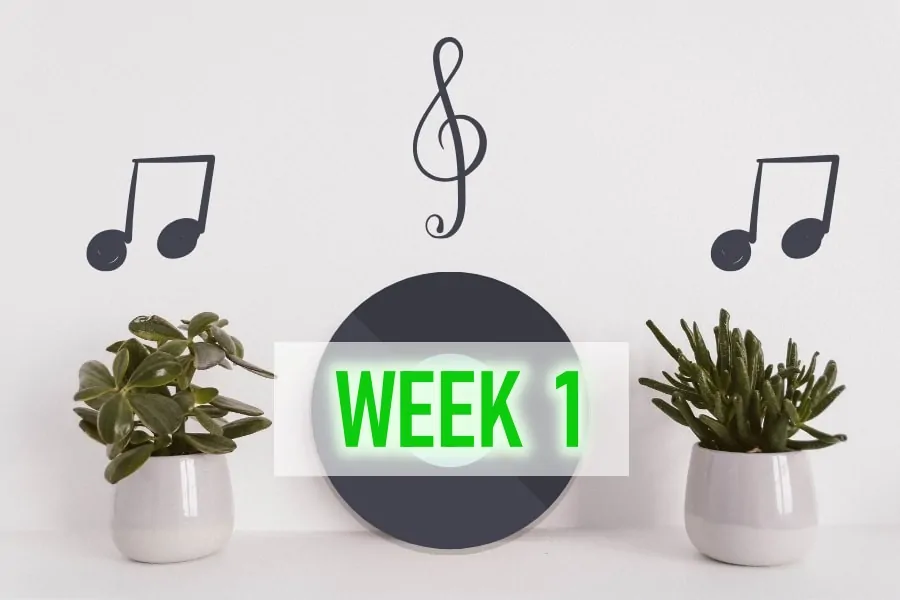

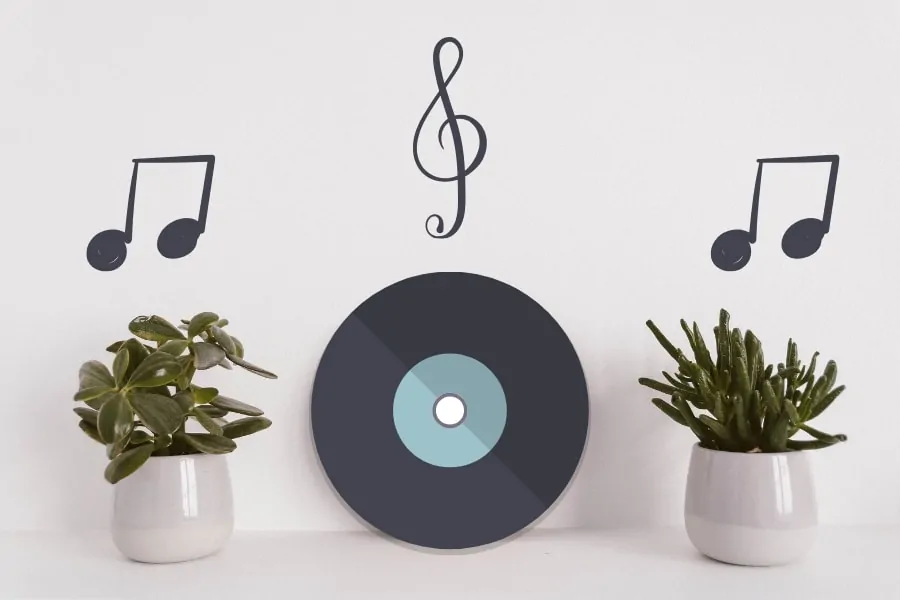
There’s plenty of research on this matter, however, there are no definitive conclusions. If you ever asked yourself what is the best music for plants to grow or do plants grow faster with music, we are here to present you with the results we obtained through our experiment.
Some say classical music is the best music for plants, while others tend to agree any type will yield the same results as long as it’s within acceptable noise levels. We decided to put the many theories on the effect of music on plant growth to the test.
Therefore, we conducted our own experiment with our plants and equipment to find out what kind of music do plants like. Read on to see how we did it, what plants we used, and how we measured the impact of music on plants. You can also use the illustrated results below to check out our results:
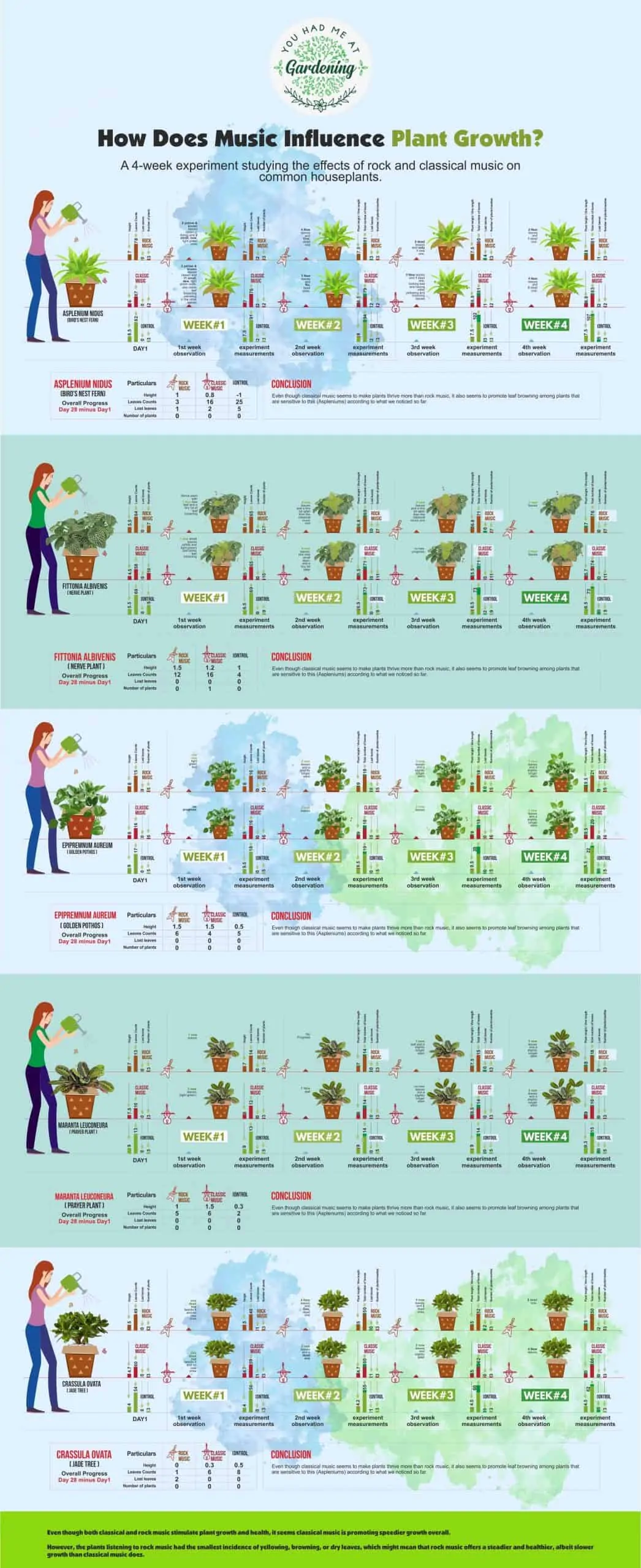
It’s generally well-accepted that music affects plant growth and health and we also know why:
Further research on the type of music for plants and sound frequency concluded with the following results:
Here’s a short rundown of some previous experiments on the effects of music on plants:
These experiments have been conducted both on open field cultures and greenhouse plants using various levels of sound pressure and frequencies. The research was coordinated by Reda HE Hassanien, Tian-Zhen HOU, Yu-Feng LI, and Bao-Ming LI, and the findings were published in the Journal of Integrative Agriculture.
Findings:
Sound waves of 100 dB and 1 kHz played for one hour at a distance of 0.2 meters (7.8 inches):
Sound waves of 0.1 to 1 kHz and 65-75 dB played for 3 hours every 2 days from a distance of 30 to 60 meters (98.5 to 197 feet):
Significantly increased yield, as follows:
Strengthened plants’ immune systems and decreased the incidence of pests and diseases as follows:
Dr. Singh worked at Annamalai University as head of the Botany Department in 1962 when he decided to test the effect of music on plants.
He used balsam plants (Impatiens glandulifera) and initially chose classical music; later on, he tried out raga music played on different instruments (flute, violin, harmonium, and Reena, an Indian instrument Google knows absolutely nothing about from the looks of it). He later repeated the experiment with local field crops using gramophones and loudspeakers.
Findings:
Sir Bose, a famous polymath (physicist, biologist, biophysicist, botanist, archaeologist), spent his life studying how plants respond to environmental variables. Naturally, his research also touched upon the effect of music on plants.
Findings:
You can review the complete documentation of these extensive studies in Response in the Living and Non-Living (1902) and The Nervous Mechanism of Plants (1926).
Therefore, it’s safe to assume there is a scientific basis for the effect of music on plant growth. Now, let’s see how some of the most popular indoor plants are affected by music!
Start date: February 15, 2019
End date: March 15, 2019
Okay, so all the research we found online got us really hyped – according to what we’ve read so far, sound definitely has an impact on growth. But can it really make or break even the toughest of houseplants? That’s what we wanted to find out!
We’ve got three groups, each comprised of six plants in very similar developmental stages:
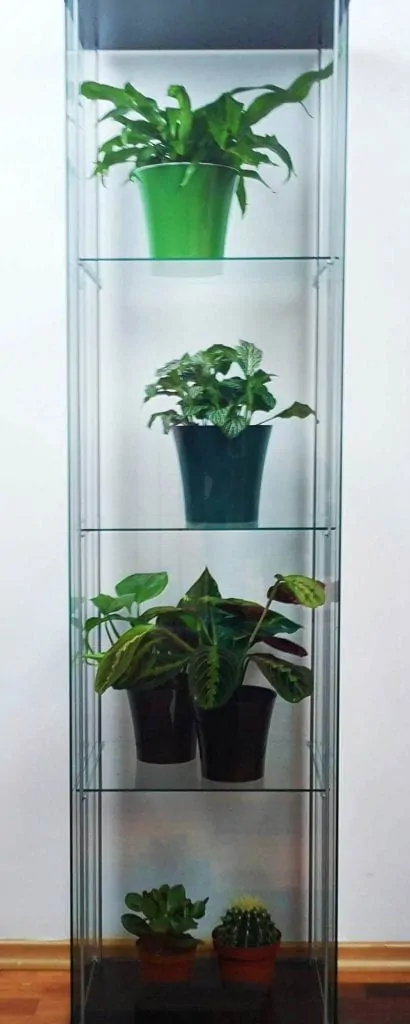
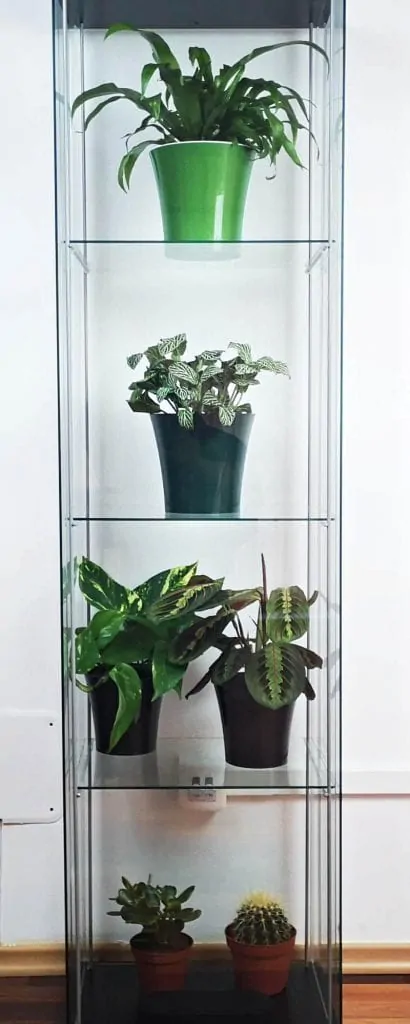
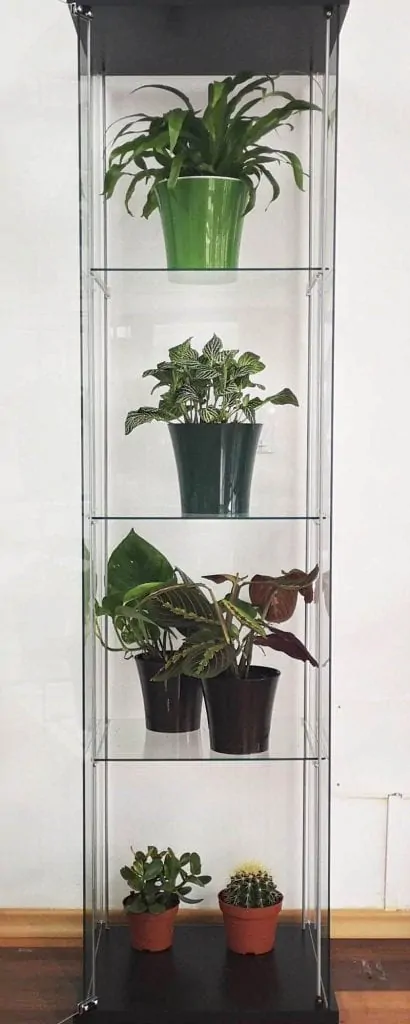
Two of the groups were exposed to heavy metal and classical music 4 hours per day during maximum light exposure, meaning anytime between 9:30 AM and 3:00 PM.
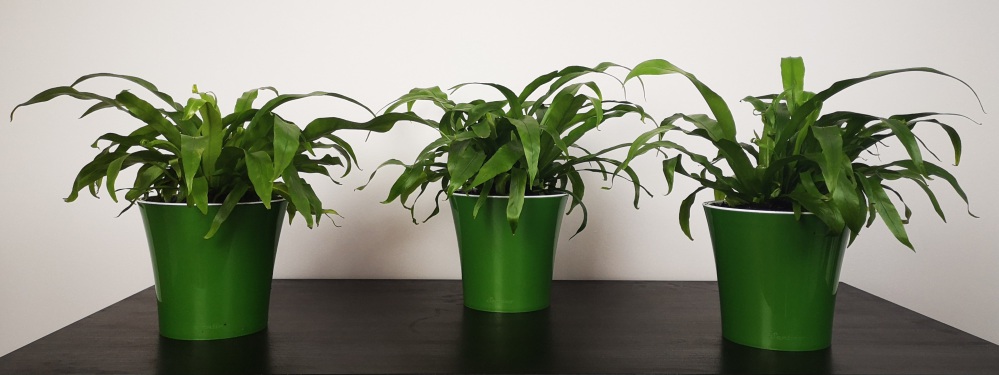
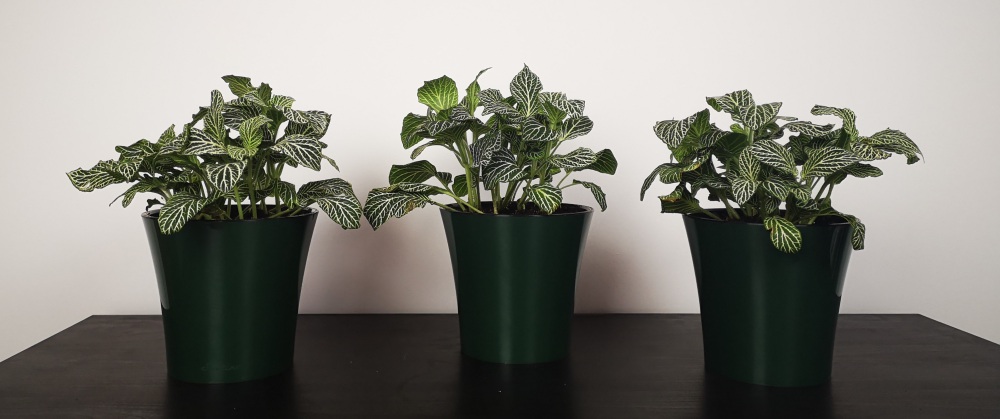
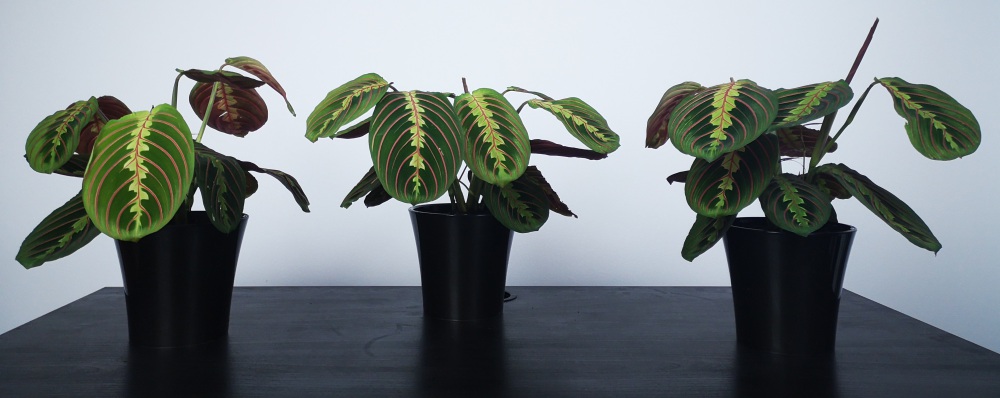
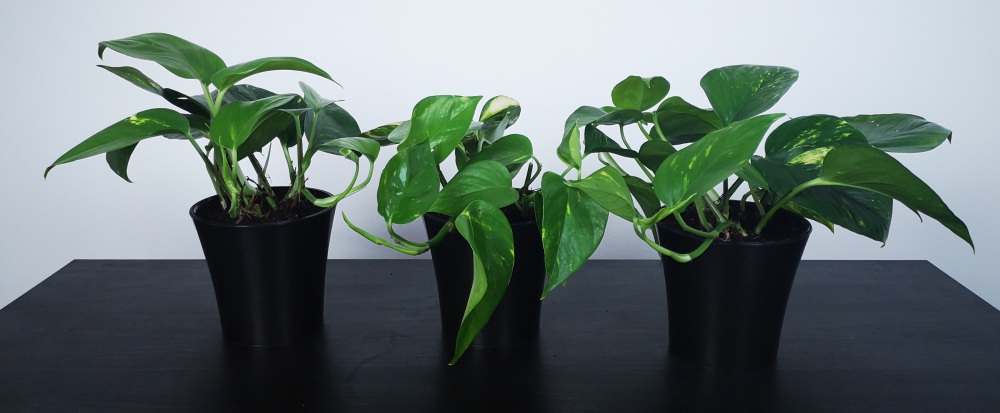
If you want to learn more about growing and caring for the Jade tree, read our Jade Plant Care Guide and enjoy this wonderful succulent at home or in the office!
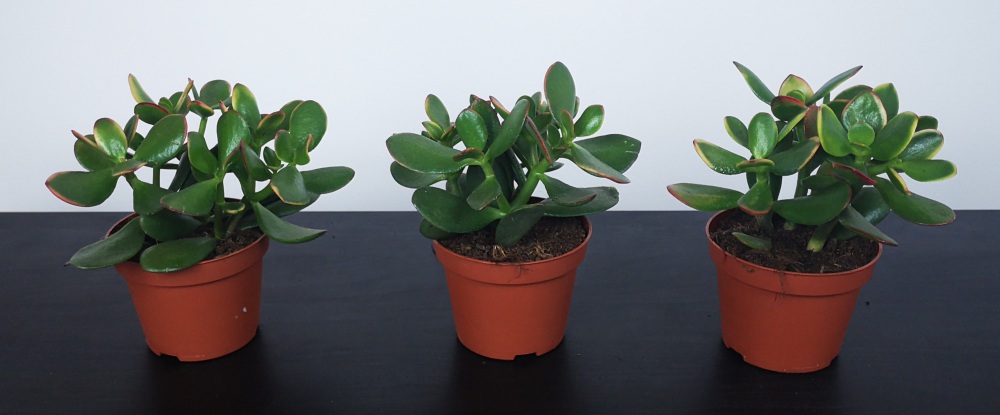
Growing this cactus is a rewarding experience with or without music. While sturdy and not at all pretentious, you cannot consider this plant unkillable. For this reason, we encourage you to check out our guide on how to care for succulents and cacti and offer your gorgeous houseplants the best maintenance methods for their thriving!
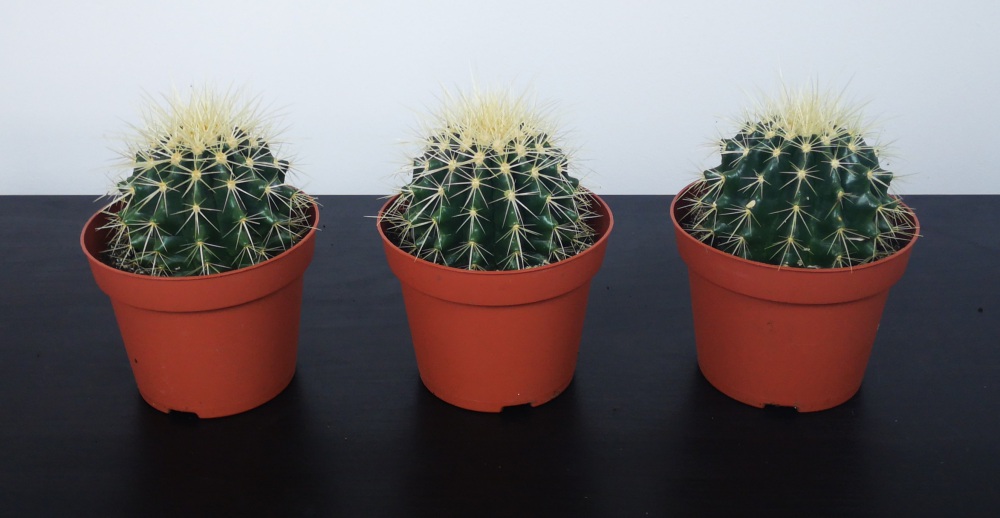
For this experiment on plants and music, we tried to answer two of the most frequently asked questions coming from plant and music lovers:
Moreover, we’ve curated the following playlists for our angry outcasts and fancy groups:
ROCK PLAYLIST
CLASSICAL PLAYLIST
I used Spek to analyze the frequency and volume of the music to make sure it doesn’t reach unhealthy levels for our plants.
This took us a while to figure out as the three groups of plants need to have identical or very similar environments.
We’ve ultimately decided to isolate the three groups using three glass showcases and set them up in a 3rd-floor office, with a North-East facing window. Humidity levels were low and, obviously, there were no cold drafts to affect them.
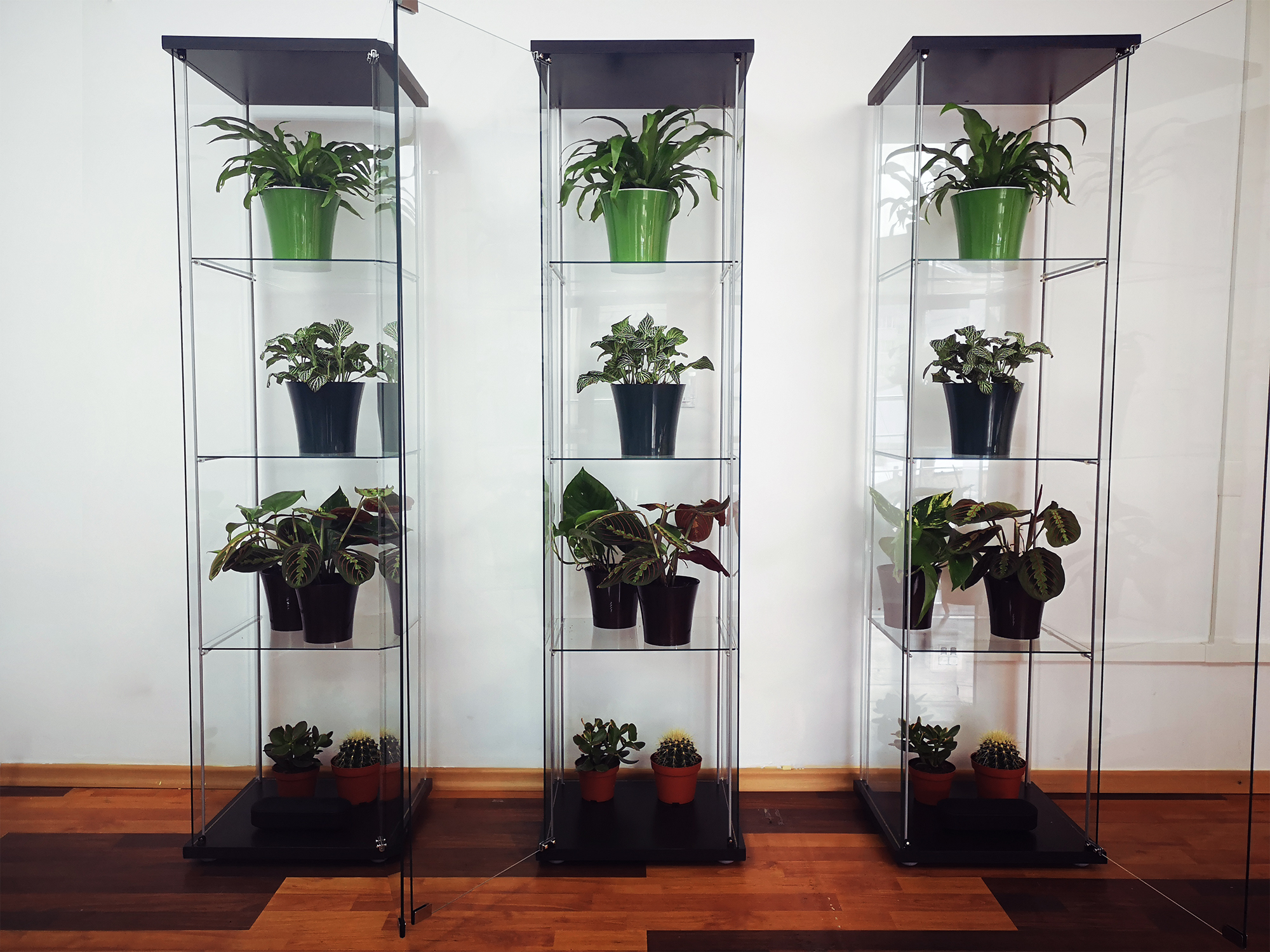
I’ve repotted the aspleniums, fittonias, marantas, and epipremnums on February 11th (4 days before starting the experiment) and placed them in their showcases to give them some time to get accustomed to their new environments. The jade trees and the cacti can handle another few months in their current pots, so I’ve postponed their repotting for a bit.
I used Pokon potting soil and clay pellets for drainage. I chose Santino pots because I’m pretty happy with how my own houseplants behave after potting them in such planters.
However, if you want to repeat the experiment or simply get high-quality soil and containers for your houseplants, feel free to check out our guides on the best potting soil products available on the market, and the best self-watering pots and planters for your lovely indoor plants!
Watering the Aspleniums, Fittonias, Marantas, and Epipremnums once per week has proven optimal so far. I estimate the jade trees and cacti will need watering once every 2 to 4 weeks.
We have measured the following aspects once a week:
| Asplenium Nidus | Fittonia Albivenis | Epipremnum Aureum | Maranta Leuconeura | Crassula Ovata | Echinocactus Grusonii | ||||||||||||||
|---|---|---|---|---|---|---|---|---|---|---|---|---|---|---|---|---|---|---|---|
| Rock | Classical | Control | Rock | Classical | Control | Rock | Classical | Control | Rock | Classical | Control | Rock | Classical | Control | Rock | Classical | Control | ||
| Day 1 (February 15) | Height | 7 | 6 | 8.5 | 5.5 | 4.5 | 5.5 | 8 | 8 | 9 | 7 | 7.5 | 9 | 5 | 4.7 | 4 | 3.8 | 3.8 | 4 |
| Leaf Count | 78 | 67 | 82 | 64 | 58 | 69 | 15 | 16 | 17 | 13 | 10 | 13 | 49 | 60 | 54 | - | - | - | |
| Plants | 3 | 2 | 3 | 7 | 10 | 9 | 5 | 6 | 5 | 4 | 3 | 5 | 3 | 3 | 3 | 1 | 1 | 1 | |
The short answer is yes – but it really depends on the type of music and the plants, too!
Check out the weekly progress of our experiment on the effect of music on plant growth or scroll down to see our findings after the whole experiment:
The effects of rock music are overall better than I initially expected – even though most plants preferred classical music, most of our angry outcasts did better than their brothers and sisters in the control group. The only exception to this was the Asplenium which, surprisingly, grew much better in complete silence.
So, is rock music bad for plants? NO! On the contrary, it helps your plants grow better! But let’s get into some details!
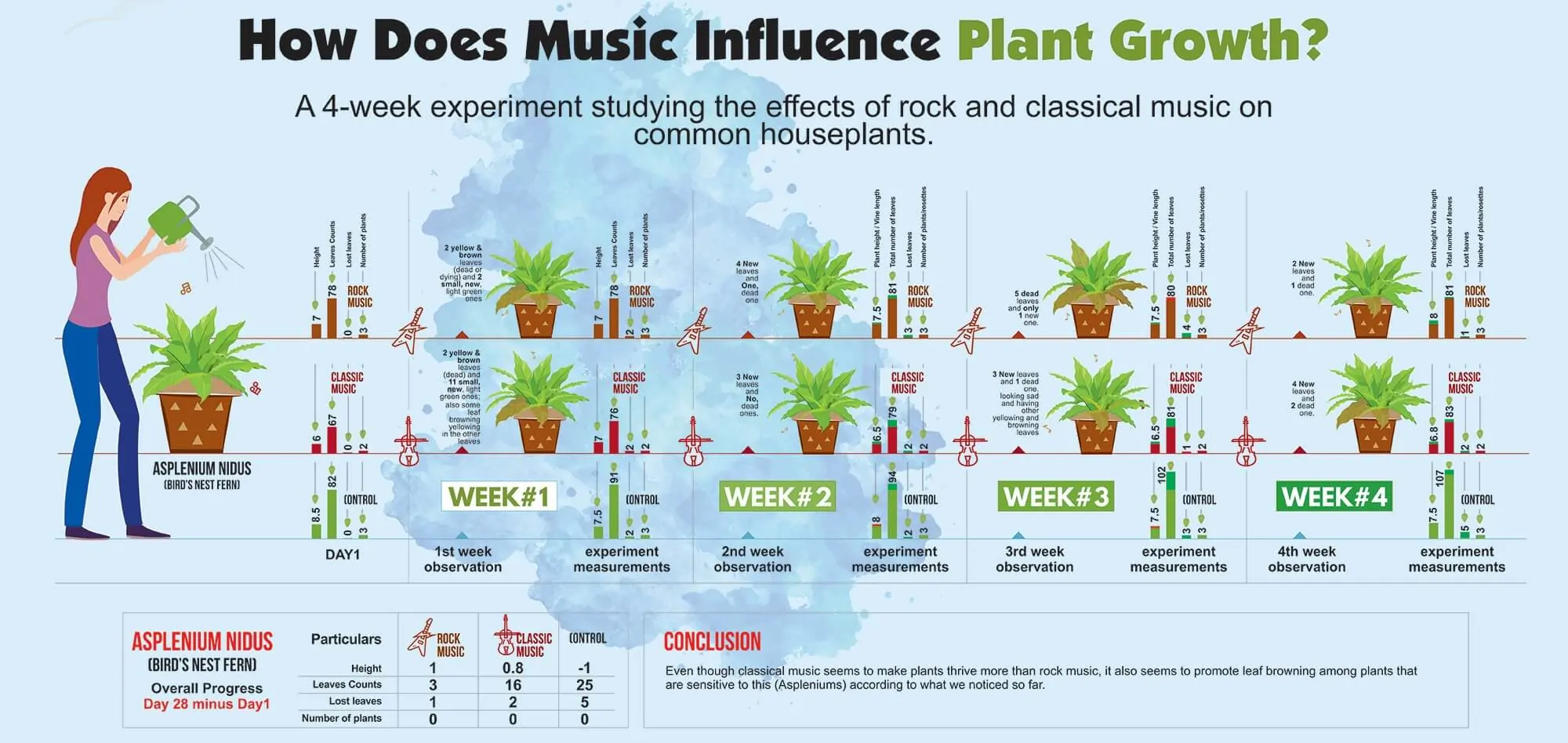
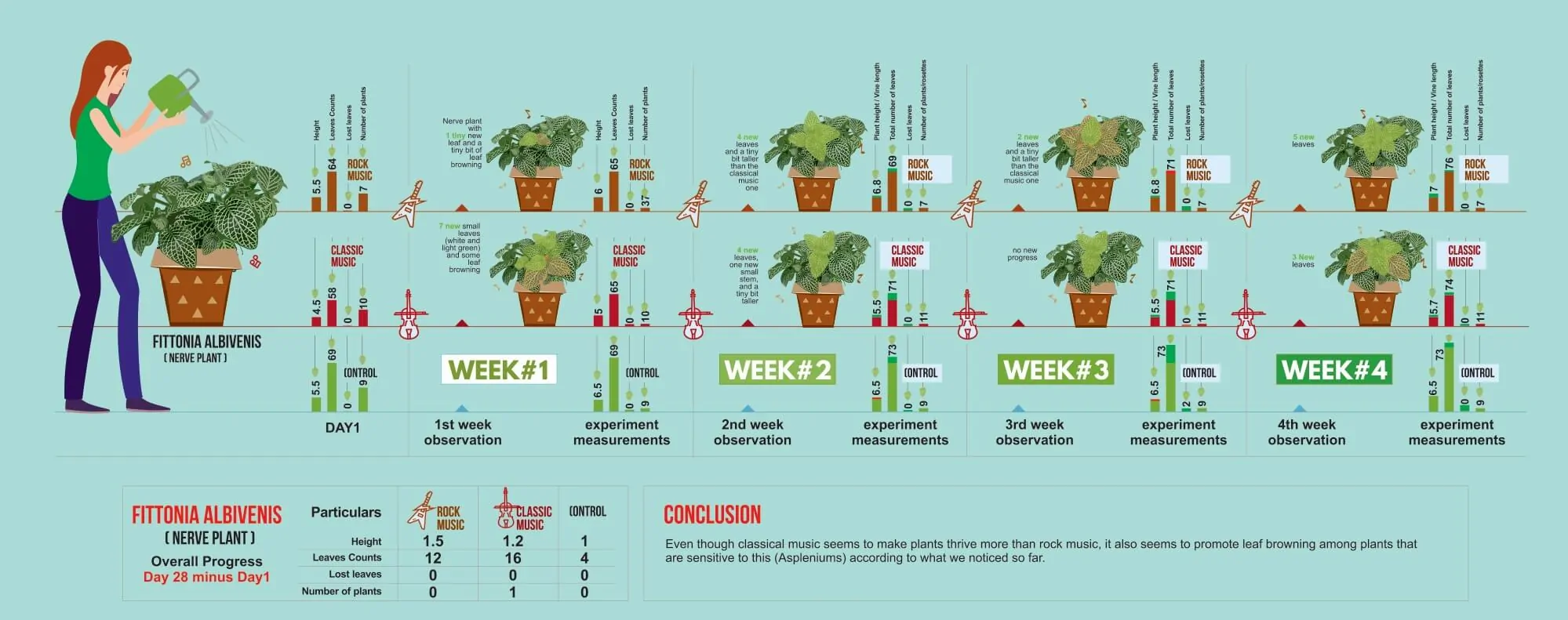
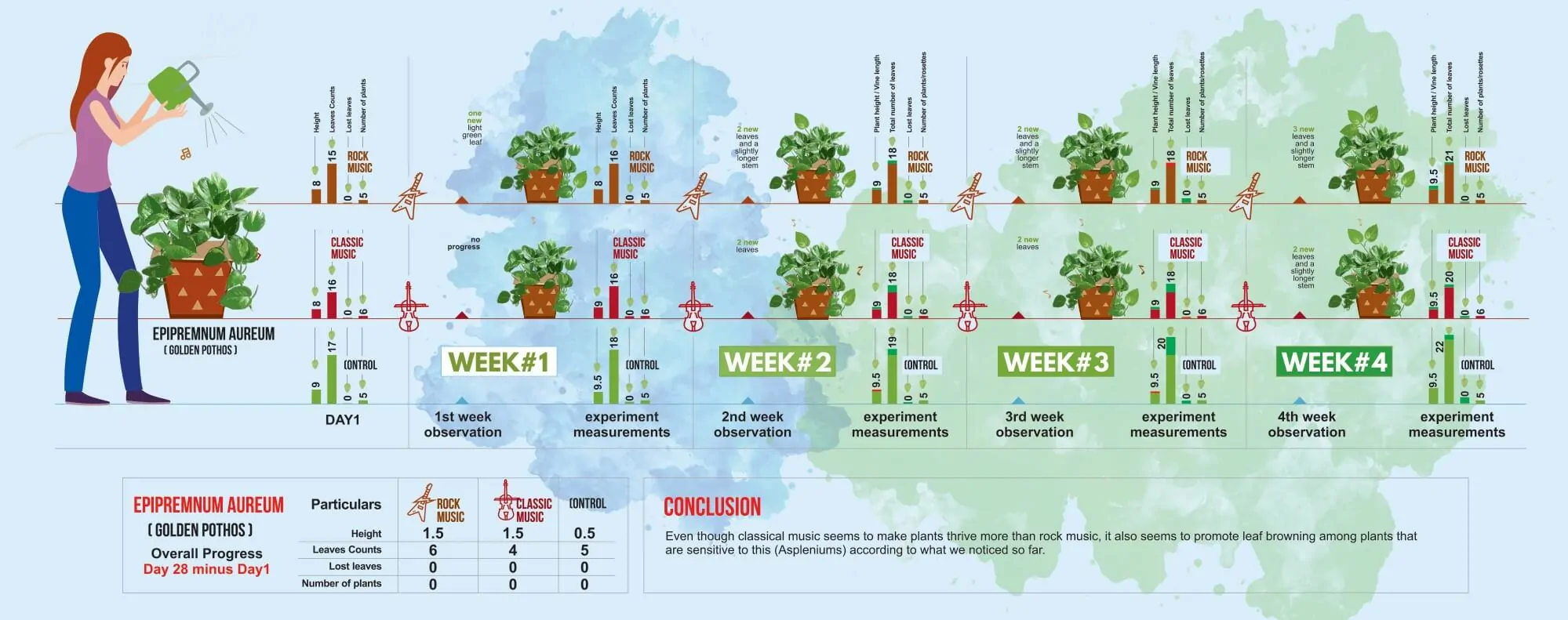
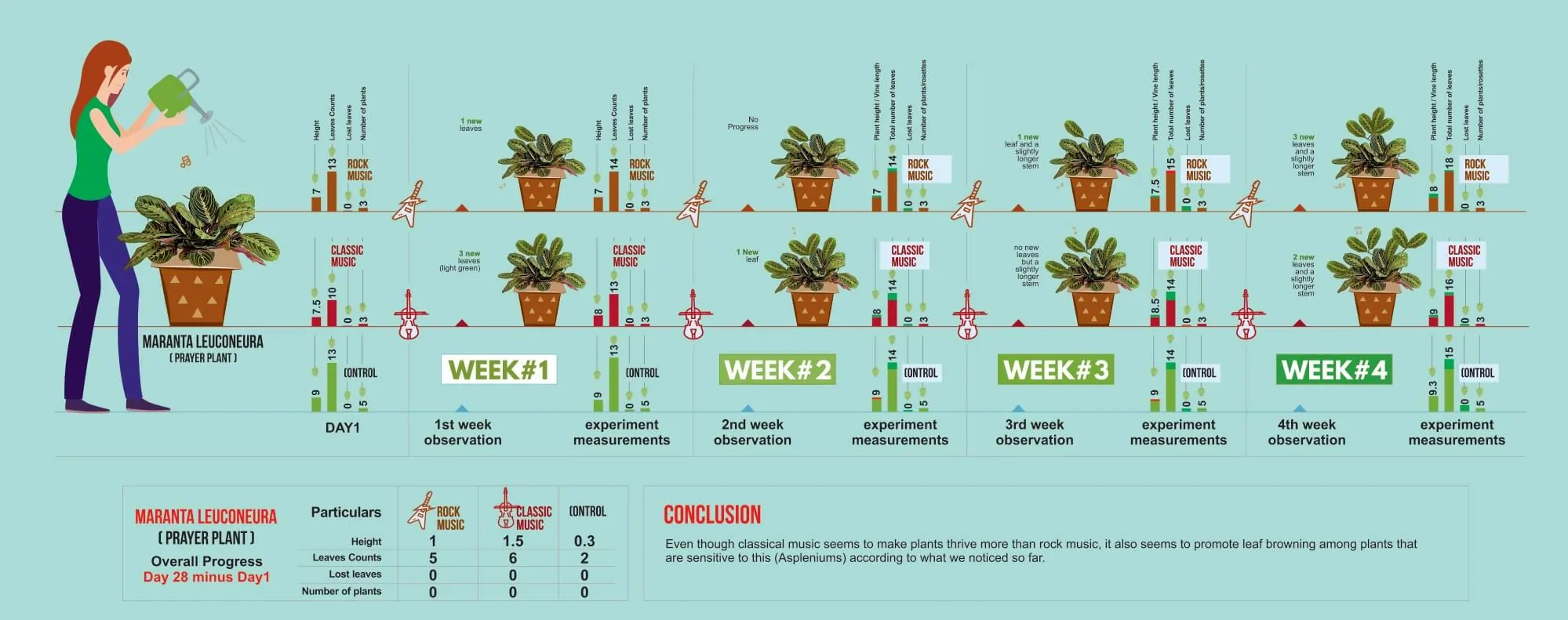
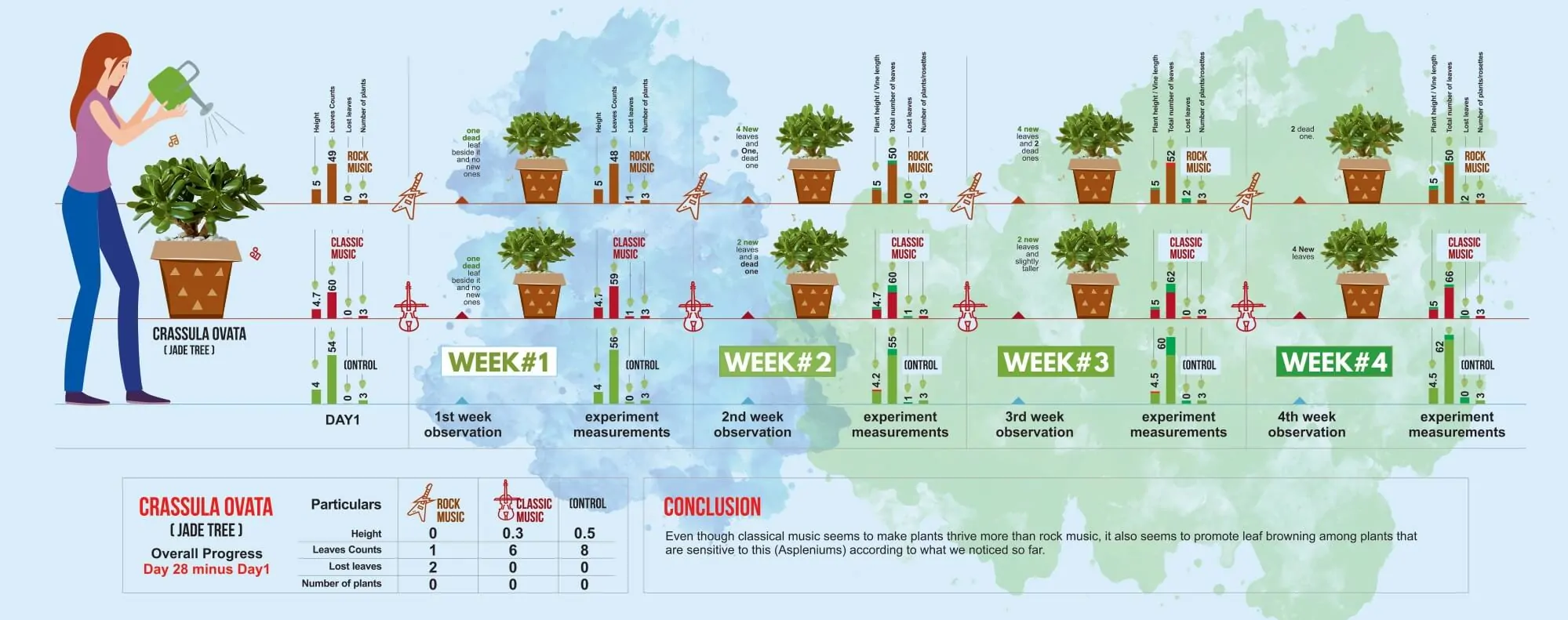
Some plants may like rock music while others may not. For instance, pothos seems to genuinely enjoy rock music and thrive, while our jade tree showed clear signs of wishing to steer clear of this music genre.
But despite being so mixed, the results are much more encouraging than those of other similar experiments, in which plants reportedly died after being exposed to too much rock music (3 hours or more) or literally grew away from the speakers.
In our experiment, most of our plants grew (slightly) faster while listening to rock music than their peers in the control group, but in some cases, they did not fare as well as those in the classical music group.
All in all, nearly all our plants seem to enjoy some music than no music at all, a conclusion in line with the findings of MythBusters during the ‘Exploding House’ episode.
Overall, our experiment confirms yet again that classical music is the best music for plant growth. Even though there have been some ups and downs for some of the plants listening to classical music, their evolution has been the most consistent and noteworthy.
Nevertheless, it’s important to note that rock music is not as harmful as previously thought – in fact, in many cases, the plants listening to rock music did way better than the ones in the control group.
Classical music for plants is hands-down a much better music alternative for plants than rock music, as our small-scale experiment has shown. So, if you want bushier and happier houseplants Bach, Beethoven, or Schubert need to be your weapons of choice.
Before we deliver the conclusion of our experiment, let’s see a short round-up of the results while answering some of the most frequently asked questions coming from our readers.
Yes. As strange as it may seem, plants do thrive in the presence of music. As you have seen above, it depends on the types of plants you grow and the music you are offering, but as an overall result, sound waves and vibrations have an impact on plant growth.
Our experiment showed that some plants grow better with classical music, while others enjoy classical music. As other experiments and studies showed (we mentioned them already and we give you a bibliography at the end of the article for more references), the best music for plants revolves around string instruments. Research shows that jazz, heavy metal, ragas, and Indian classical music encourage plant growth, the yield of leaves and fruits, and more.
Despite myths, rock music is not bad for plants. As you have seen above, pothos is a true rock fan. It seems that some plants enjoy heavy metal and we would be very curious to learn about other plant experiments involving rock subgenres.
It seems so. Classical music appears to be the best music for plants to grow and thrive in your home. Now, keep in mind that classical music is not everybody’s cup of tea, so if you plan to listen to some masterpieces while watching your plants grow, make sure you choose something you also enjoy. As we said above, the preferred instruments are the string ones, but if you play piano music to your houseplants and you get significant results, we want to hear about them!
If you ever wondered what affects plant growth and you want to perform some experiments on your houseplants (that are hard to kill, otherwise we don’t recommend any), check out our experiment on the influence of negative words on plant growth. It would mean using some swear words, but we believe you will get surprised by the results. You may learn, as we did, that negative discourse intended to instigate resentment and hostility affects plant growth rate so it would be better to refrain from this experiment if you love your plants and you don’t want to bully them into withering.
Even though both classical and rock music stimulates plant growth and health, the winner seems to be classical music due to the speedy growth it has promoted in most plants. Nevertheless, the plants listening to rock music had the smallest incidence of yellowing, browning, or dry leaves, which might mean that rock music offers a steadier and healthier, albeit slower growth than classical music does.

Monthly updates on your favorite plants and how to keep them alive, delivered straight to your inbox!
Privacy Policy
This privacy policy outlines what info we gather from our visitors and contributors, the tools we use to collect, store, and protect it, and how we use this information.
Like any other website on the World Wide Web, YouHadMeAtGardening.com records some info about you and your device during your visit. This privacy policy outlines how our team gathers, stores, protects, and uses the information it gathers from visitors of the YouHadMeAtGardening.com website.
By continuing to use this website, you implicitly agree to this policy; if you do not agree to some or all of the procedures listed on this page, you can opt out at any time, however, you might not enjoy the intended browsing experience.
Our team reserves the right to alter this privacy policy with no prior notice to you. However, if the alterations made affect your personal data in any way, you will be notified immediately by email, on our homepage, or here.
Information YouHadMeAtGardening.com Collects
Our systems gather personally and non-personally identifiable information from visitors of the YouHadMeAtGardening.com website.
The only personally identifiable information we collect is your name and e-mail address only when leaving comments if you’re a visitor, or when submitting content and leaving comments, if you’re a contributor.
However, if you are not comfortable with providing your personally identifiable information to us, you can also use an alias instead of your real name and e-mail address without breaking any rules or regulations currently in use.
Note: If you submitted a comment using your personally-identifiable information and want it removed, you can always contact us and we will remove your info in 30 days.
The non-personally identifiable information we collect is your IP address, ISP information, device and browser info, and your browsing patterns – specifically the pages and websites you visit. This information cannot be used to track down your identity.
How We Collect Your Information
We use the following tools to gather personally and non-personally identifiable information from visitors and contributors:
• Cookies: these tiny text documents contain unique identifiers that are stored in your computer after your expressed consent. Cookies collect non-personally-identifiable information about your browsing patterns, which helps us pinpoint the areas of our website that require extra work and the areas that fully meet your needs.
• Log files: These tools record browser and device information, browsing patterns, websites that referred you to the YouHadMeAtGardening.com website, pages our website referred you to, and other types of non-personally identifiable information.
• Sign-up forms: these requests only come up when registering for our newsletter and is the only way our team collects personally-identifiable information from visitors.
How We Protect Your Information
All information we gather, both personally and non-personally identifiable, is stored in systems and databases managed only by the YouHadMeAtGardening.com team. We use the latest security measures to make sure the information you provide and the information we gather stays confidential, such as encryption, user behavior monitoring, and a series of managerial procedures.
How We Use Your Information
We only use your personally and non-personally identifiable information to improve the quality of the website and your browsing experience while here. We want to know which pages and sections of our website satisfy your needs and are of real value to you and which ones need improvement so we can make the proper adjustments. We also use your information to make sure the website is properly displayed on your device and browser.
If you choose to opt in for our newsletter, we will also use your information to keep in touch.
However, know that the YouHadMeAtGardening.com team will never share your information with other parties in exchange for financial rewards or any other kind of benefits. Some third parties might get very limited access to your info, but only to your non-personally identifiable information and only as we described above.
The personally identifiable information you provide is strictly confidential, therefore we will not share it with anyone.
Advertising
This Site is affiliated with CMI Marketing, Inc., d/b/a CafeMedia (“CafeMedia”) for the purposes of placing advertising on the Site, and CafeMedia will collect and use certain data for advertising purposes. To learn more about CafeMedia’s data usage, click here: www.cafemedia.com/publisher-advertising-privacy-policy

Hi Florina (I’m sure I’m not the first to say “what a great name for a plant person”)!
I saw something like this on Nova (PBS program) in the 70s. Always fascinated with it. May I post this to Facebook? I don’t see a link.
Thanks, and happy new year.
I’m amazed, I have to admit. Seldom do I come across a blog that’s equally educative and engaging, and let me tell you, you have
hit the nail on the head. The problem is an issue that not enough people are speaking intelligently about.
Now i’m very happy I found this in my hunt for something relating to this.
Hello. I’m not doubting that sound actually does affect plants. But I’m curious about the controls implemented in your test. Did you give a measure amount of water each time to each of the same plants at the same time? Were all the plants the same age? Did they listen to music at the same time as the other group? Did you move them to a separate room to play the music? Did you use the same volume each time and position the plants in the same spot and distance from the speakers? Ideally, it would be neat to see the effect of a solitary note played over a period of time to a handful of the same plants. Then a different note, or more than one note, play to another group? Then a melody of the same note with rests here and there….all of these at the same volume. Then another group with the same single note held at a greater volume……etc etc etc….as, I have a hunch it’s not the genre at all. But if it is the genre, what is it about the genre? I’m very curious to hear a reply back regarding the control measures that I started off with asking about. Thanks a bunch! Neat experiment! Oh also, it might also be worthwhile to start plants from seed with music, so we know that any reaction (positive or negative) isn’t due to anything experienced by the plant before the test began.
Your search is good.
I think that mix (classic and other)music is not best for plant growth.
Relativity of temperature and classic music and humidity is remarkable
I will check it.